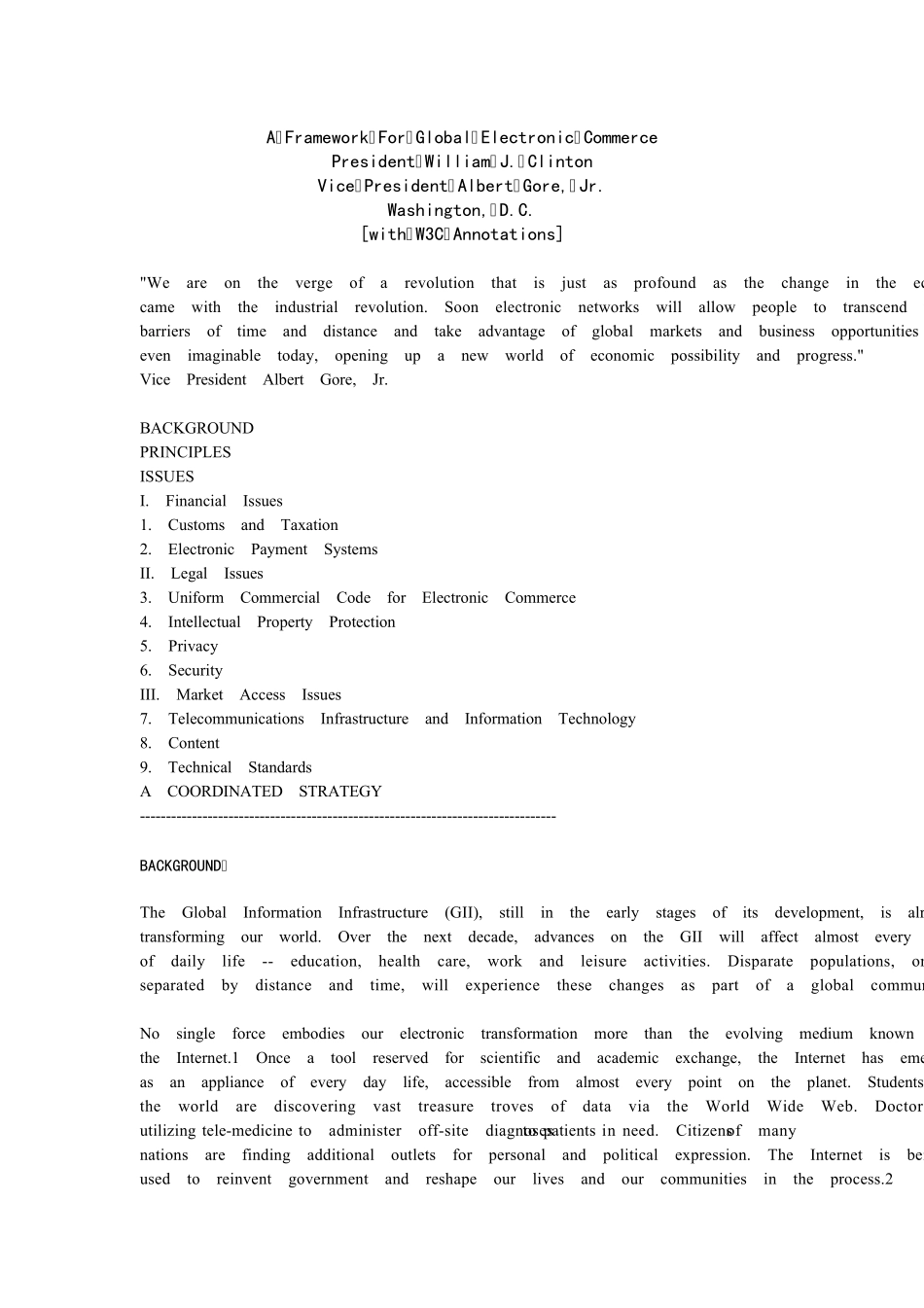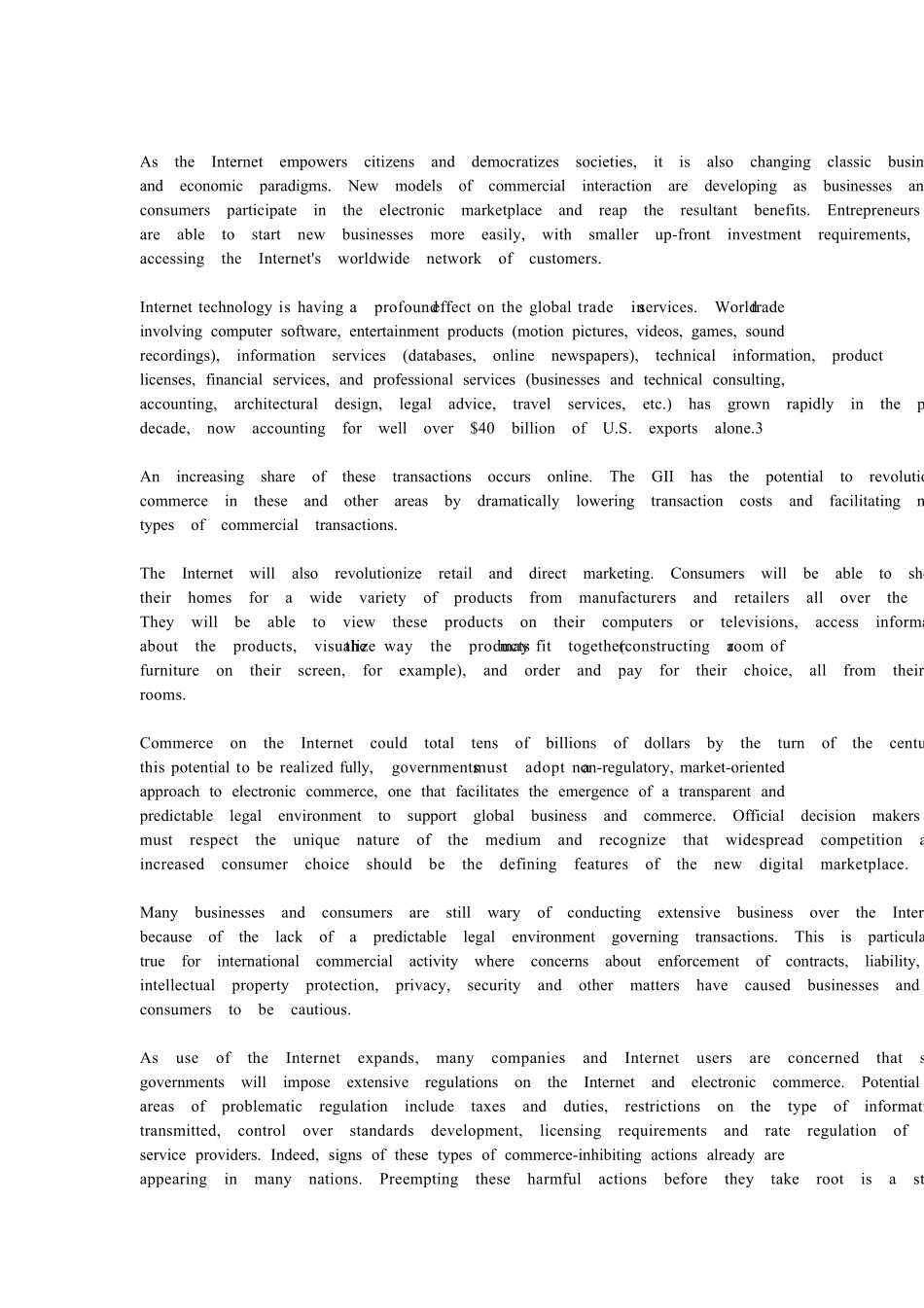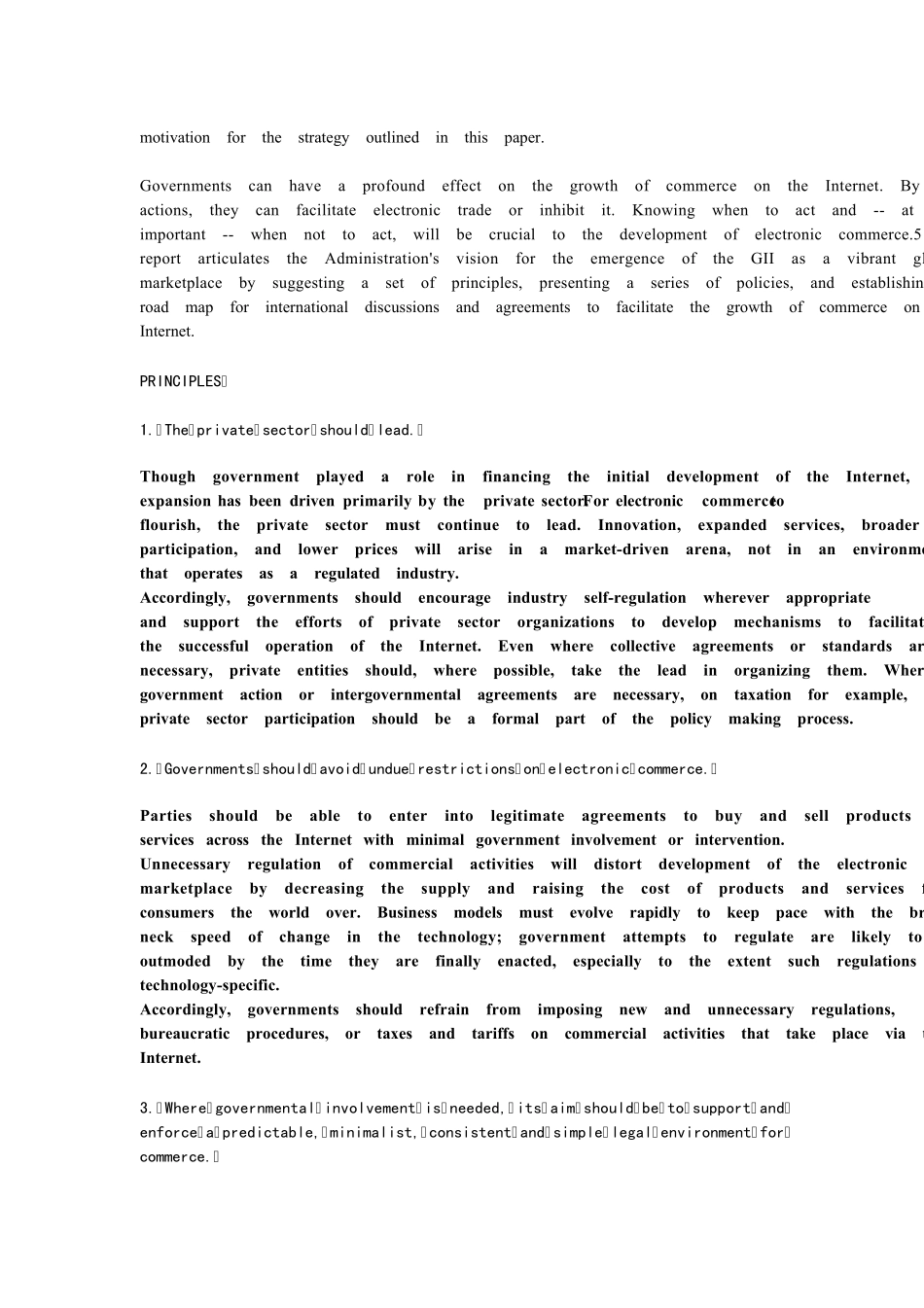A Framework For Global Electronic CommercePresident William J. ClintonVice President Albert Gore, Jr.Washington, D.C.[with W3C Annotations]"We are on the verge of a revolution that is just as profound as the change in the economy that came with the industrial revolution. Soon electronic networks will allow people to transcend the barriers of time and distance and take advantage of global markets and business opportunities not even imaginable today, opening up a new world of economic possibility and progress." Vice President Albert Gore, Jr. BACKGROUND PRINCIPLES ISSUES I. Financial Issues1. Customs and Taxation2. Electronic Payment Systems II. Legal Issues3. Uniform Commercial Code for Electronic Commerce4. Intellectual Property Protection5. Privacy6. Security III. Market Access Issues7. Telecommunications Infrastructure and Information Technology8. Content9. Technical Standards A COORDINATED STRATEGY --------------------------------------------------------------------------------BACKGROUND The Global Information Infrastructure (GII), still in the early stages of its development, is already transforming our world. Over the next decade, advances on the GII will affect almost every aspect of daily life -- education, health care, work and leisure activities. Disparate populations, once separated by distance and time, will experience these changes as part of a global community. No single force embodies our electronic transformation more than the evolving medium known as the Internet.1 Once a tool reserved for scientific and academic exchange, the Internet has emerged as an appliance of every day life, accessible from almost every point on the planet. Students across the world are discovering vast treasure troves of data via the Wo...


